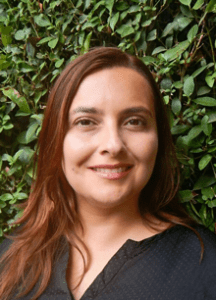Embargoed for Release
Wednesday, October 18, 2017
9:30 a.m. U.S. Eastern Time
Media Contact:
Nalini Padmanabhan
ASHG Director of Communications and Marketing
301.634.7346
press@ashg.org
Findings Reported at ASHG 2017 Annual Meeting

BETHESDA, MD – Duplications of large segments of noncoding DNA in the human genome may have contributed to the emergence of differences between humans and nonhuman primates, according to results presented at the American Society of Human Genetics (ASHG) 2017 Annual Meeting in Orlando, Fla. Identifying these duplications, which include regulatory sequences, and their effect on traits and behavior may help scientists explain genetic contributions to human disease.
Paulina Carmona-Mora, PhD, who presented the work; Megan Dennis, PhD; and their colleagues at the University of California, Davis, study the history of human-specific duplications (HSDs), segments of DNA longer than 1,000 base pairs that are repeated in humans but not in primates or other animals. In this study, they focused on HSD regions that do not code for genes, but instead regulate the expression of other genes.
“What’s special about these regulatory elements is that they have the propensity to impact the expression of genes nearby on the same chromosome, as well as elsewhere in the genome,” said Dr. Dennis. “This means that one duplication could affect many genes, amplifying its impact.”
Since duplicated segments are more than 98% identical, it is difficult to distinguish between them, Dr. Dennis explained. As a result, they were discarded in many past genomic analyses. For this reason, the researchers began by creating a new human reference genome that included the duplicated segments. This allowed them to identify areas likely to contain enhancers, which are regulatory elements that increase expression of other genes, and assess their effect on gene expression across organs and tissue types.
For example, duplication of the SRGAP2 segment, which took place about three million years ago, may be associated with several neurological traits specific to humans, such as a larger prefrontal cortex in the brain and more efficient synapses, or connections between brain cells. Strikingly, when human-specific SRGAP2C was expressed in laboratory mouse embryos, the mice had similar outcomes. Beyond SRGAP2, many of the genes contained in HSDs examined were associated with neurological development, and some may also have implications for immune response.
“Our results point to differences between humans and primates, and hint at what makes us unique as humans,” said Dr. Dennis. Additionally, since many of the genomic regions prone to duplication were related to neurological traits, this work may suggest future avenues for scientists seeking to explain the genetic mechanisms behind neurological diseases such as autism, epilepsy, and schizophrenia.
The researchers are currently validating the candidate enhancer regions they found by comparing gene expression levels across tissue types. They are also assessing the effects of a duplication’s introduction on the structure and function of nearby segments. Finally, they are measuring differences between original (ancestral) segments and the duplicated versions appearing in later generations, such as sequence changes since the duplication and potential effects on function.
“We tend to think of DNA as a linear sequence, but these results remind us how dynamic it is,” said Dr. Carmona-Mora. “It’s exciting to see that not only does duplication of genes play a role in human evolution, but perhaps duplication of regulatory elements does, too – even those outside the expected regions.”
Presentation:
Dr. Carmona-Mora will present this research on Wednesday, October 18, 2017, from 9:30-9:45 a.m., in Room 230G, Level 2, South Building, Orange County Convention Center.
Press Availability:
Dr. Carmona-Mora and Dr. Dennis will be available to discuss this research with interested media on Wednesday, October 18, 2017, from 1:00-1:45 p.m. in the ASHG 2017 Press Office (Room 210D).
References:
Carmona-Mora P et al. (2017 Oct 18). Abstract: Characterization of the noncoding regulatory landscape within human-specific duplicated regions. Presented at the American Society of Human Genetics 2017 Annual Meeting. Orlando, Florida.
About the American Society of Human Genetics (ASHG)
Founded in 1948, the American Society of Human Genetics is the primary professional membership organization for human genetics specialists worldwide. Its nearly 8,000 members include researchers, academicians, clinicians, laboratory practice professionals, genetic counselors, nurses, and others with an interest in human genetics. The Society serves scientists, health professionals, and the public by providing forums to: (1) share research results through the ASHG Annual Meeting and in The American Journal of Human Genetics; (2) advance genetic research by advocating for research support; (3) educate current and future genetics professionals, health care providers, advocates, policymakers, educators, students, and the public about all aspects of human genetics; and (4) promote genetic services and support responsible social and scientific policies. For more information, visit: http://www.ashg.org.
9650 Rockville Pike | Bethesda, MD 20814 | 301.634.7300 | society@ashg.org | www.ashg.org
Connect with ASHG on Twitter (@GeneticsSociety) | Facebook | LinkedIn
